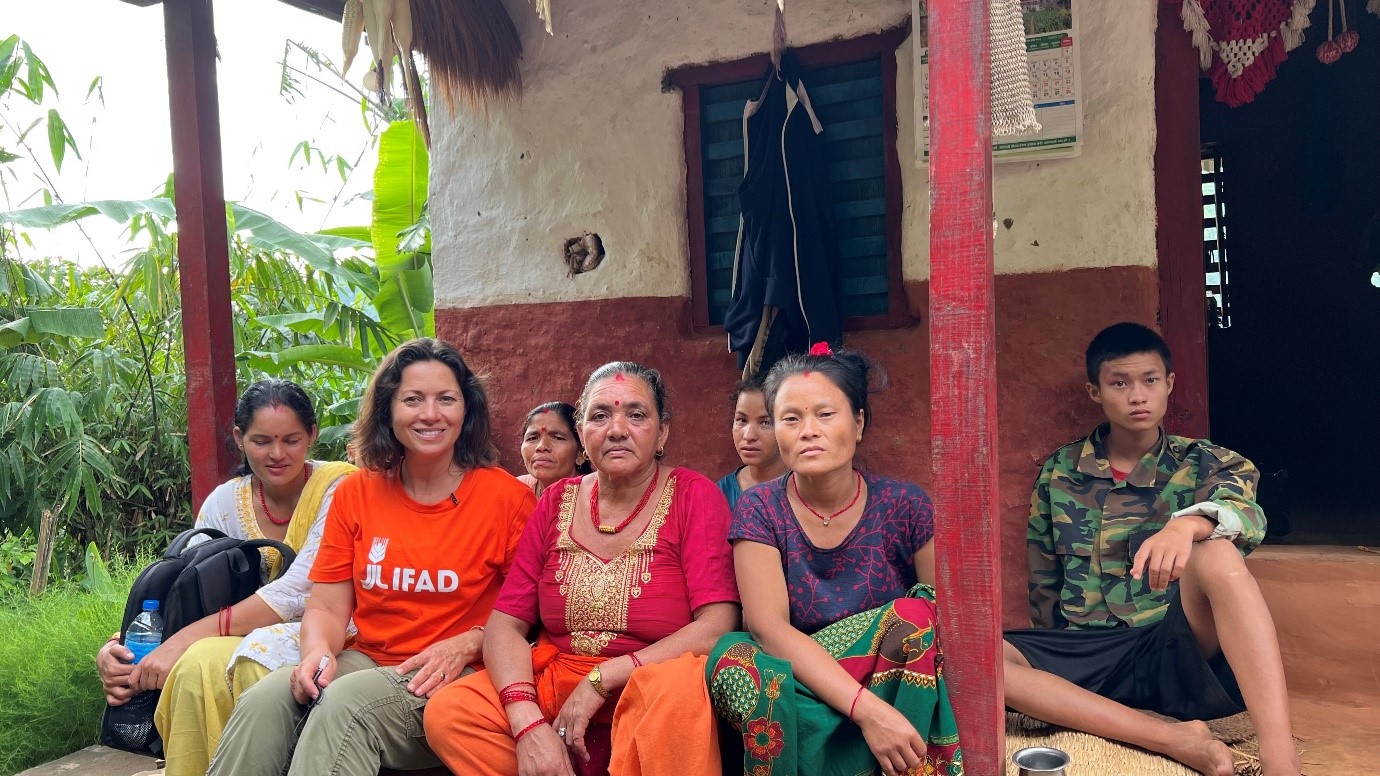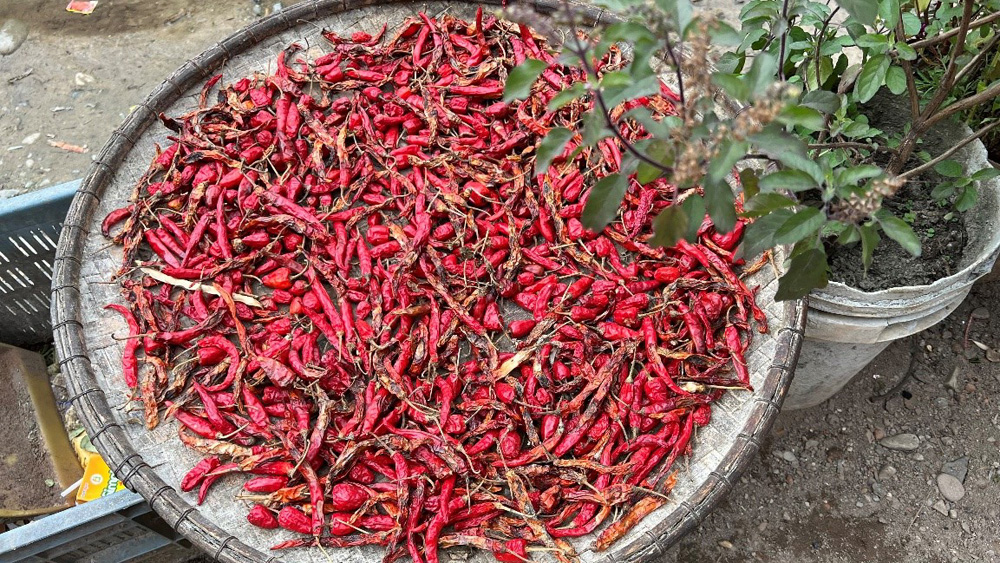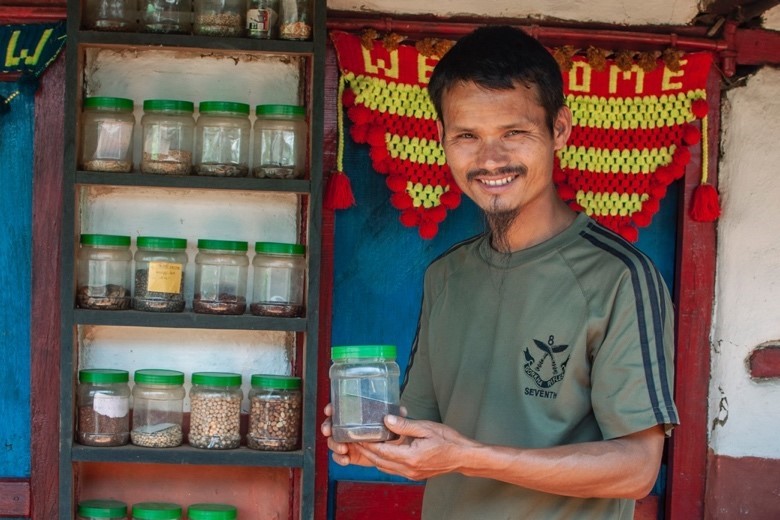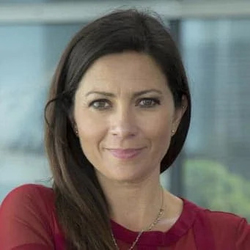Cooking at the top of the world: A family in Nepal share their story of climate resilience with Meteorologist Clare Nasir
IFAD Asset Request Portlet
Asset Publisher
Cooking at the top of the world: A family in Nepal share their story of climate resilience with Meteorologist Clare Nasir
Estimated reading time: 4 minutesThe foothills of the Himalayas are possibly the most remote place I have ever dined. The landscape is breath-taking. A cascade of mountain peaks extends beyond the horizon, broad meandering valleys below. We’re in Karnali Province, a six-hour drive from Nepal’s capital Kathmandu, where the land is verdant, every hue of green, at times dazzling in the sunlight, often dark and earthy as clouds and rain pass over it.
The winding roads are narrow, potholed from heavy weather. Occasional clusters of rocks and boulders hinder the route – remnants from the sheer volume of water surging down the mountainside during heavy rains. It’s late September and monsoon season should be coming to an end, yet conditions remain decidedly wet.
A week before my trip, over 80 people were killed in the neighbouring province when too much water overwhelmed the mountainside, causing a series of violent landslides.
Local communities live with the threat of climate change weather extremes throughout the year. What were once predictable monsoon patterns are now more erratic than ever and when they strike, they are intense. The dry season is drier than a few decades ago – wildfires spark and spread with deadly ease. Every season brings with it natural forces that threaten lives and land – and we know that this is due to the broader climate crisis.
Up one rocky incline, five minutes offroad from a small village, a farm holding appears. I trek with Sam my cameraman and a Nepalese team from the IFAD-supported ASHA project.
As I step over a bustling stream, I find Megnath Ale Magar, his wife and their family. This is their hillside farm, and they are here to show me around. Their eyes are calm, their movements lithe and strong. The camera is on them – yet I sense their focus remains with their land, animals, plants – their harvest.
 |
| Mrs. Ale [front right] with her family and friends, sitting next to the IFAD-supported permaculture school. © Sam Cole |
I am here to taste a traditional dish; nettle curry with Dhindo and tomato pickles. All ingredients reaped from their own pickings. Soon I am crawling up the mountain following a light footed Mrs. Ale. We are surrounded by over 200 plants. A rich Eden of fruit and vegetables. She rips the tops of the nettles, the youngest leaves, chooses fresh chilis, plump tomatoes, all manner of herbs, Sichuan peppercorns. Beyond, I hear the soft noise of bullocks, goats, hogs feeding, their urine and dung captured for fertilizer and manure.
 |
| Chilis are a cash crop and grow abundantly in this region. © Clare Nasir |
This trip is more than a chance to eat with the family, I am here to witness how local farmers are fighting back against global climate impacts.
Megnath has adopted permaculture, a sustainable and self-sufficient agricultural practice that mimics the diversity and resilience of natural ecosystems. The results are transformative. Soils are stronger, indigenous crops hardy and fruitful. The workings of water and land management so clever, inter-connected, naturally industrious, like their beehives – comfortably shaded by a swathe of lemon and orange trees.
The family tell me that over the past three years their yields have increased significantly. Their experience and knowledge now shared across the broader community; they even have their own permaculture school for neighbouring farmers. Their seedbanks now full of local cultivars that respond with zest to the rejuvenated soils.
 |
| Megnath established a permaculture farmer field school with financial support and technical guidance from ASHA. © IFAD/Kaushal Shrestha |
In climate science we talk of adaptation; a key topic in the COP27 talks in Egypt. Yet it’s one thing discussing such methods around a conference table, another adapting them effectively to protect lives, livelihoods, and environments. This takes effort, patience and financial support.
On a hillside in mid Nepal, this is what I am witnessing. The steely determination, tapping into ancestral knowledge and empowering through action.
The food the family prepares for me – what we call Recipes for Change – is quite a culinary experience. The Dhindo is a cornflower dish and an important, energy-giving staple. The nettle curry, smooth, delicious. The tomato pickle, an incredible explosion of freshness in my mouth. A diverse, locally produced plate of food which beautifully represents the work and success of Megnath and his family.
As I leave, more rain approaches. From the little time I have spent here, I know waterfalls will appear from the mountainside, finding the simplest path to the rivers below. Yet the confidence Megnath has in his land, his healthy soils, means this bout of wet weather probably bothers me more than him. It’s a tough life being completely weather dependent, especially with increasingly shifting climate patterns. Yet my view of this part of the Himalayas is crowned in hope – a place where people and nature are working together for a safer future.
Publication date: 15 November 2022